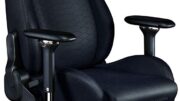Effective bluffing starts with the right hands. Bluffs should include cards that make it less likely opponents hold strong hands, known as blockers. For example, holding an ace or king can be useful since it reduces the chance of opponents having premium hands like AK or AQ.
Semi-bluffing is another way to balance ranges. Hands with equity, such as flush draws, open-ended or gutshot straight draws, and two overcards, can apply pressure while retaining the ability to improve. These bluffs create tough spots for opponents and help build pots when strong hands develop. Balancing pure bluffs with semi-bluffs is essential to ensure your betting range doesn’t become predictable. Over time, a well-structured range will keep your opponents guessing, which maximizes long-term value.
Adjusting Bluffing Frequency Based on Opponent Type
Bluffing against the right opponents is as important as the cards themselves. Tight players who only call with strong hands are harder to bluff. Loose players who fold frequently can be pressured more often. Recognizing an opponent’s tendencies will shape your bluffing strategy. Someone frequently checking the turn after betting the flop may be giving up. This presents an opportunity for a well-timed bluff.
Understanding different playstyles, like bet sizing and hand selection, helps in all aspects of strategy. Learning how to play Texas Hold’em properly means knowing when to push aggression and when to slow down against stubborn opponents unwilling to fold. In online games, using HUDs (Heads-Up Displays) can help analyze an opponent’s fold percentage on various streets, giving you data-driven insights into when a bluff may succeed.
Understanding Bet Sizing and Bluffing Thresholds
Bet sizing dictates bluffing effectiveness. Smaller bets, like one-third pot, can force folds from marginal hands while preserving chips when called. Larger bets, like full pot, require stronger hand selection due to increased risk.
Equity thresholds dictate bluffing frequency. A $4 bet into a $6.5 pot requires an opponent to fold 38% of the time to break even. Bluffing becomes profitable if opponents fold more frequently than this. Pot odds influence how often bluffs should occur. A 2:1 bet ratio suggests bluffing one-third of the time to prevent opponents from exploiting betting patterns.
Also, observe how opponents react to various bet sizes. If someone rarely calls half-pot bets but defends against small bets, you can tailor your bluff sizing accordingly. The ability to adapt sizing helps reinforce your range construction and adds an extra layer of deception.
Bluffing on Different Streets
Bluffing opportunities are more abundant early in the hand. Players still have wider ranges. This makes it difficult to call without strong hands. Bluffing becomes riskier since calling ranges narrow on later streets.
The river is the most selective street for bluffing. Hands with no showdown value but good blockers work well. Bluffing ranges should be smaller since failed bluffs at this stage rarely have equity to fall back on. River bluffs should only be attempted with clear reads if an opponent has shown strength throughout.
It’s also important to identify when an opponent’s line doesn’t make sense. If their betting pattern is inconsistent with a value hand, a bluff may succeed even on the river. Trusting your instincts, combined with logic and blockers, helps you find profitable bluff spots.
Using Math to Fine-Tune Bluffing
Game Theory Optimal strategies establish the right bluffing ratio. Approximately one-third of the range should consist of bluffs if betting pot-sized. Bluffing should occur around 40% of the time for a two-thirds-pot bet. These values prevent opponents from easily countering aggression.
Breakeven calculations reinforce this approach. The breakeven percentage formula, Risk / (Risk + Reward) * 100, shows whether a bluff is viable. For example, a $100 bluff into a $100 pot needs to succeed 50% of the time.
Practicing mental math while playing is a useful skill. Understanding how often a bluff must work in real-time helps avoid reckless plays and supports disciplined aggression. Over time, these calculations become intuitive.
Adapting to Table Dynamics
Bluffing frequency should shift depending on table dynamics. Increasing bluffing frequency maximizes profits if opponents are folding too often. Reducing bluffs and waiting for strong hands is a better approach against aggressive players who rarely fold.
Observation plays a role. Pressure opponents more if they frequently fold to turn aggression after calling the flop. Avoid bluffing them entirely if another opponent always calls river bets. Every player type requires an adjustment in bluff frequency.
Live reads—such as hesitation, breathing changes, or chip handling—can also inform bluff opportunities. Combining live and statistical reads will enhance your adaptability and boost your long-term win rate.
Working on Bluffing Ranges Off-Table
Efficiently bluffing takes practice. Equilab and Flopzilla can help analyze hand equities and opponent ranges and give insight into when bluffs will likely work. Reviewing hands after each session helps identify mistakes and fine-tune strategies.
Session reviews matter. Identifying spots where aggression could have changed an outcome improves decision-making in future games. Bluffing ranges will become better the more hands are analyzed.
Use poker forums, training sites, or study groups to gain feedback on hands you’ve bluffed. Watching hand breakdowns by experienced players is also valuable. Off-table work solidifies your in-game confidence and discipline.
Conclusion
Constructing a well-balanced bluffing range in Texas Hold’em is a blend of mathematics, psychology, and opponent observation. It starts with smart hand selection—leveraging blockers and semi-bluffs—then evolves through disciplined aggression, proper sizing, and an understanding of table dynamics.
Bluffing isn’t about trickery—it’s about representing believable hands in the right spots. Using breakeven math and Game Theory Optimal guidelines helps ensure that your bluffs are backed by logic, not emotion. When executed with care, effective bluffs apply immense pressure and force opponents into mistakes.
Commit to studying your own tendencies, as well as those of your opponents. With enough practice and analysis, your bluffing range will not only become efficient—it will become a powerful weapon in your Texas Hold’em arsenal.



